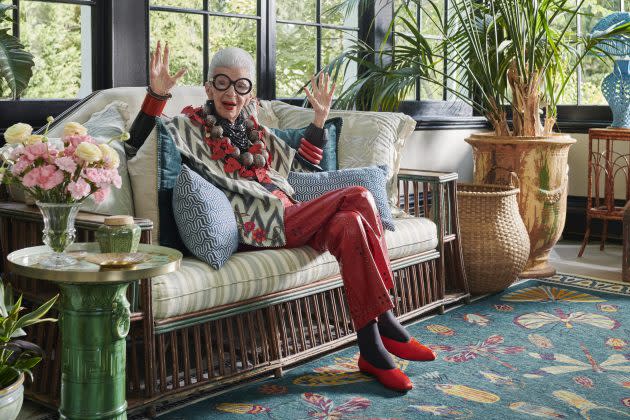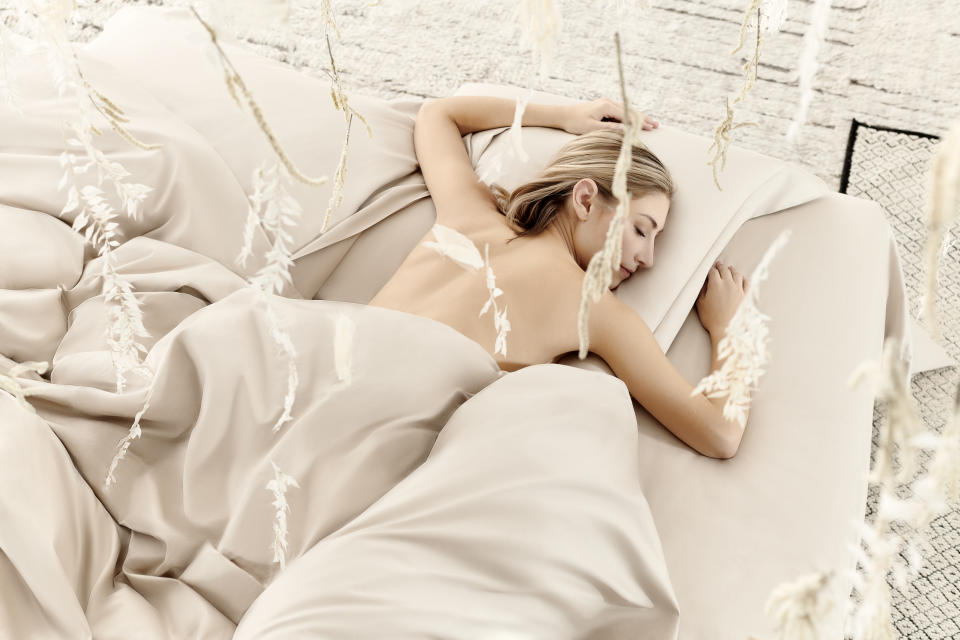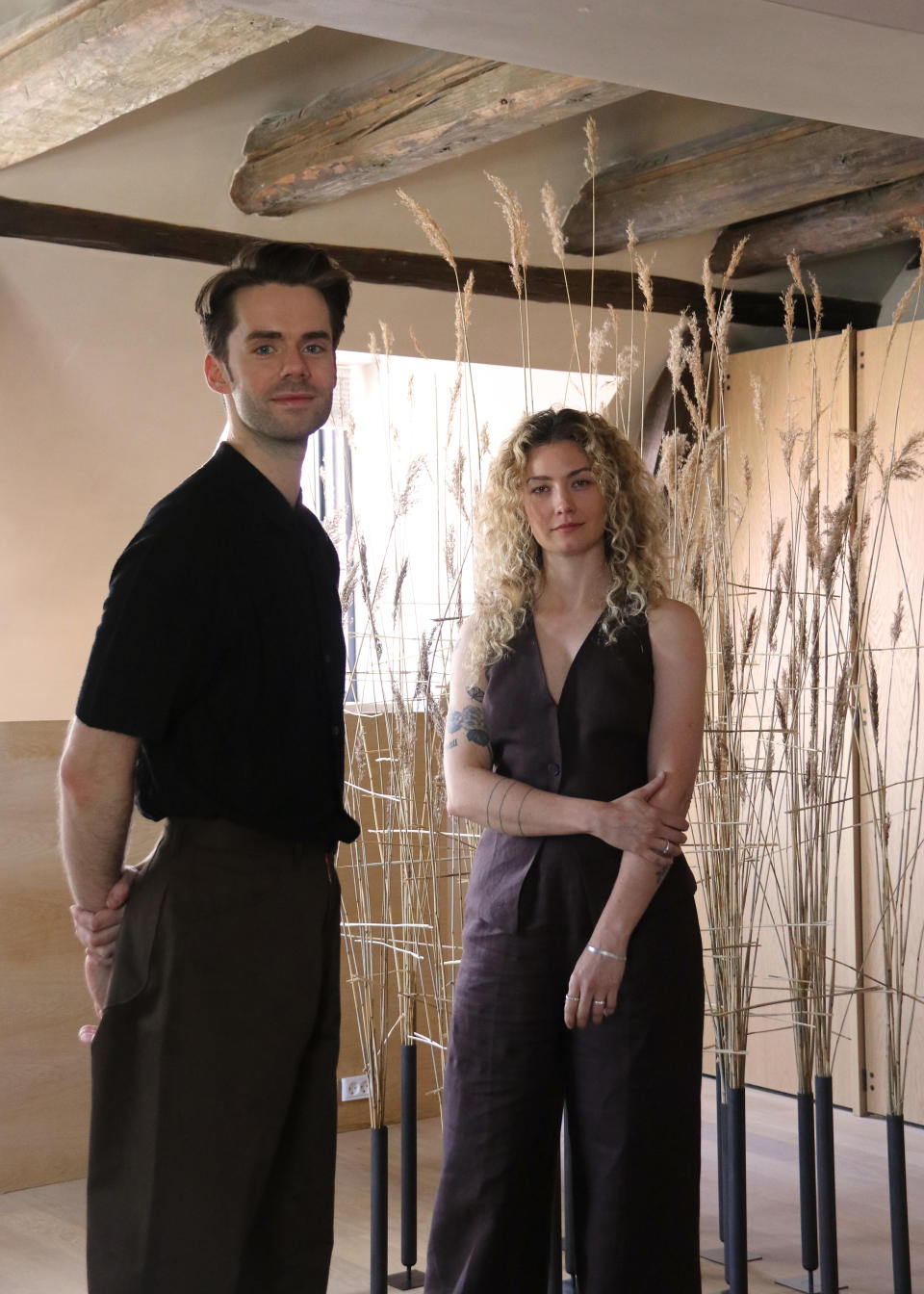Interiors Sector Embraces Its Influencer Age

MILAN — In a lot of ways, design weeks from Milan to New York are starting to look a lot like fashion week.
The influencers stand out, dressed to the hilt, and the photographers are waiting to capture them sipping on an espresso with a Kartell chair in the background, or catching an old tram outside of an installation. In Copenhagen, social celebs aren’t looking for any clicks or likes — they are interwoven among the crowd, soaking up the sun, riding their bikes around the harbor, dressed on the DL and emitting Hygge vibes the Scandi way.
More from WWD
At the same time, the broader design industry — including interiors and home — is still trying to figure out what sort of influencers make their sofas and tableware appear cool to a global public.
According to data insights firm Launchmetrics, American firms are ahead of the game and already have accrued some serious media impact value (MIV). Crate & Barrel’s collaboration with interior designer and founder of @eyeswoon, Athena Calderone, has garnered a total MIV of $2.4 million since the middle of September. The brand’s Owned Voice has garnered $476,000 in MIV from placements mentioning the partnership.
Ruggable, famous for its easy wash and dry floor coverings, generated $1.1 million in media impact value through its collaboration with Iris Apfel for a colorful design-forward collection that mirrors the fashion icon’s taste. Apfel herself was responsible for 30 percent of the total amount generated, Launchmetrics said.
The partnership with Apfel was rooted in their collaboration, not necessarily because her image generates buzz, Ruggable’s founder Jeneva Bell told WWD.
“I have personally admired Iris. Her incredible career has enabled her to become a global icon in design and fashion. She also represents and encourages others to truly show off their own personal style and break the boundaries, something we always want to inspire at Ruggable,” Bell said.
In Italy, public relations firm founder Luisa Bertoldo ditched the office space, and saw her brand relationships evolve in a natural way, while she focused on her own talents, which resulted in her lifestyle brand Bagni Luisa, her ceramics line Esperia and, yes, also influencing.
“When I had my PR firm, I started experimenting with social media on the side. Posting the products on my own Instagram and saw that those numbers were much higher than when the firm posted them,” she said while sipping tea at the bohemian chic home she shares with her partner, actor Francesco Mandelli, and daughter Giovanna.
A Corinthian column separates her modular kitchen by Very Simple Kitchen with a modern dark wood set of cabinets she had made bespoke by a local carpenter. Together, the family interacts with the products, making Montecristo sandwiches on their marble counter, with their Smeg appliances to Supergrass’ “Alright” and wearing Hawaiian spooners, with natural nonchalance.
Bertoldo knows how to make appliances and decor look appealing by homing in on the pleasures of daily life. She achieves this same message by smoothing Avene creams across her makeup-less face and completing art projects with her daughter.

Not all leading firms are concerned with turning “likes” into euros, however. A few leading lighting and furniture companies contacted said they actually don’t have an influencer strategy yet but are working on one. “We prefer not to comment on this subject right now, just because we are currently working to finalize our definitive strategy with proper guidelines worldwide,” was the answer.
Albeit late in the game compared to its fashion peers, the furnishings and lighting industry is only now rising to the the digital occasion and selling its goods online. For some companies, the faces tapped to represent the brand via social media channels not only have to have exquisite taste and an enviable lifestyle, but they also need to possess their own set of talents.
“[Influencers] must have a lifestyle which resonates with our followers’ interests. An international and possibly well-traveled life (occasionally touching base at luxury hotels supplied by Frette) a discerning taste for timeless, investment pieces and great attention to quality, design and craftsmanship,” Frette said in an emailed statement.
Frette, founded in Brianza, Italy, in 1860, unfurled a capsule collection of 100 percent organic cotton sheets, utilizing a chemical-free dyeing process that employs dried poppy petals, in April during Design Week and turned to artist and influencer Jenny Walton, whose retro chic allure has led to paid partnership deals with Net-a-porter and Tory Burch.

Fashion week regular Paolo Stella started to cross the Rubicon between design and fashion during COVID-19. He had the epiphany during lockdown one morning just after dawn, he explained, sitting in his “bow-window” armchair designed by Gaetano Pesce, sipping on his coffee while listening to classical music. While Stella’s flair for storytelling is hard to ignore, so is his business sense.
“The percentage concerns the quantity of influencers involved in this sector. The answer is, very few. So I can take much larger market slices than those of fashion, a sector in which thousands of competitors work.”
Today, Stella works with some of the finest names in Italian furnishing: De Padova, Boffi, B&B Italia and Cassina.
The relentless fashion schedule, he explained, is also taking its toll. “Design is more human in terms of time and does not run like fashion between seasons where you have cruise collections and new collections that come out practically every week. You can still enjoy the weather,” he reflected, noting that he often finds himself enthusing over designs that were developed up to 70 years ago.
Still, he hopes to break the mold when it comes to the influencer-brand business model and go beyond posts for pay. “I hope with the quality of my projects, getting out of that demeaning dynamic that leads to the basic axiom ‘you give me an object and I’ll write you a post.’ In my case, the project always tells a story, a brand, a great architect.”

In and around Copenhagen, the northern pulse of the design world, Danish firms have their own views about how they should interact with social media.
Louis Poulsen made headlines by collaborating with fashion models turned glass artists Breanna Box and Peter Dupont of Home in Heven. The result was an unexpected capsule of naughty and nice lamps with horns and tentacles. It was a subtle, but direct link to fashion and the buzz the industry has the potential to create for one of the best-known and most traditional lighting firms in the world through craft and working collaborations.
At the Audo, the home of Audo Copenhagen, the newly formed brand combining By Lassen and Menu, renowned American interior stylist Colin King has designed an installation with New York-based Field Studies Flora design studio founder Alex Crowder. King has a talent and acumen for design, working with his hands, but also has the secret sauce when it comes to building a fan base.

“We did a collaboration with Colin King and centered it around art pieces that he found. They [accessories] are reasonable to buy into as well,” said Audo Copenhagen design and brand director Joachim Kornbek Engell-Hansen. Engell-Hansen explained the aim is to reach consumers with a universe and a broad range of products on social media, particularly Instagram.
For other brands, authenticity is key. Trine Andersen, founder of Ferm Living, said the company is quite selective about who it works with. “Whether it’s an artist or designer for a product collaboration or an influencer or ambassador to communicate the brand, we look for people we find inspiring, who are authentic and creative, and who want to have a dialogue about what home means to them,” she said.
According to Andersen, sometimes less is more in the world of home and interiors. It’s more about welcoming customers by conjuring a sense of comfort and well-being rather than creating a buzz around the product.
“Our biggest ambition is, and always has been, to inspire people to create the kind of space that makes them feel comfortable and allows them to be themselves in their own home, and it is of great importance to us that we share that vision with the people we work with.”
Solve the daily Crossword

